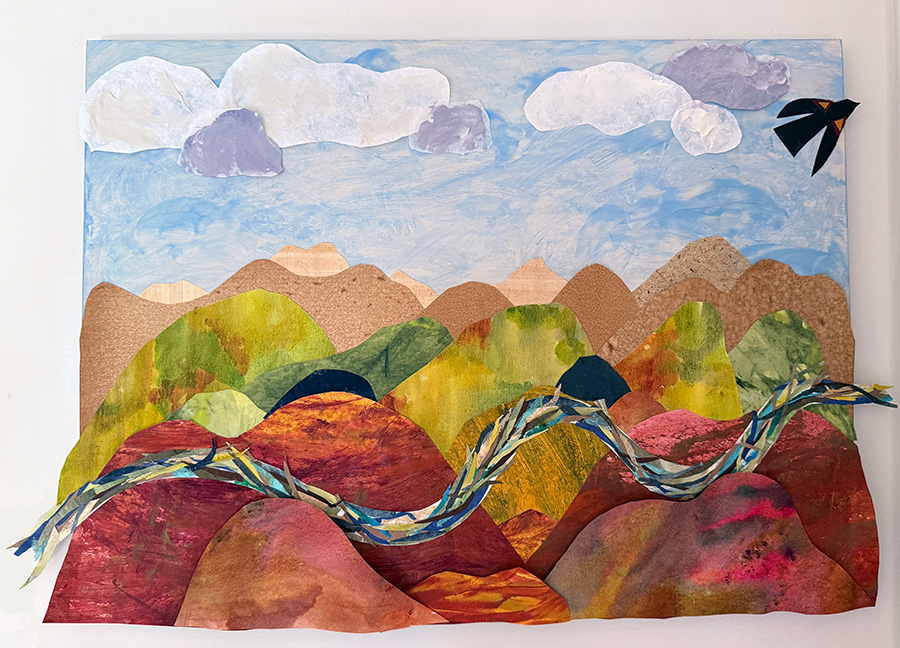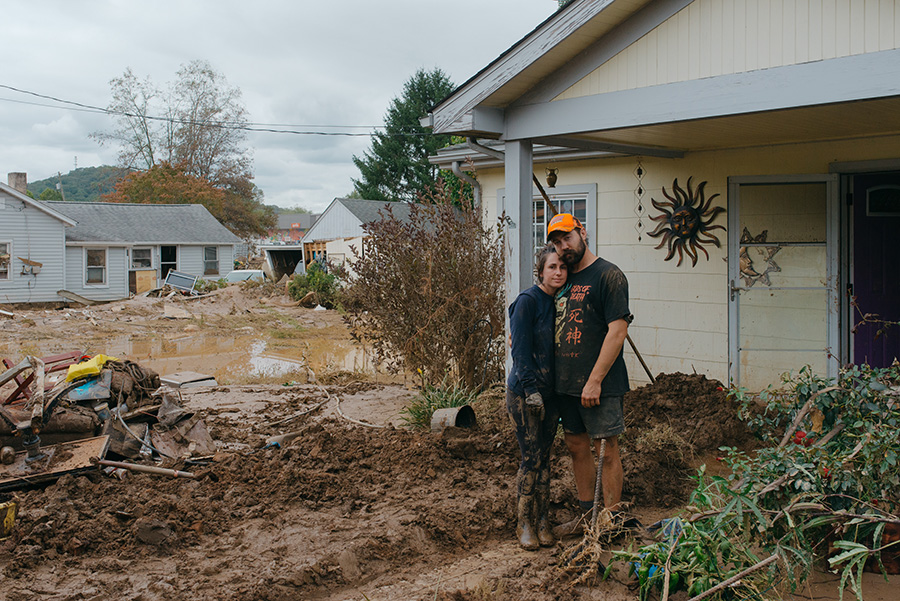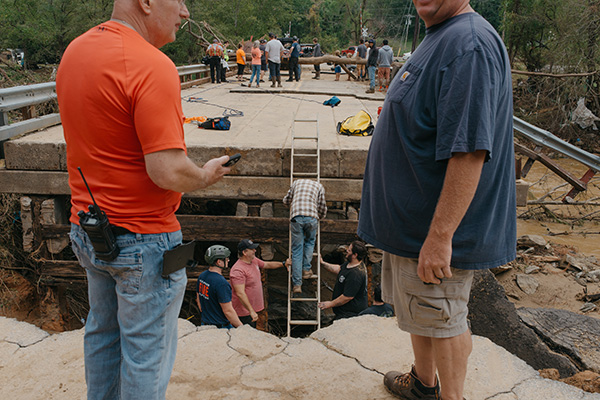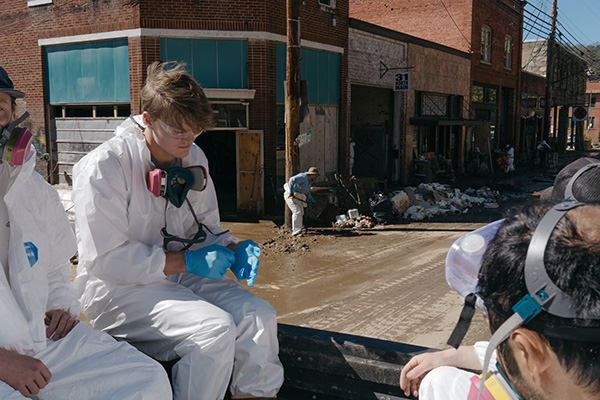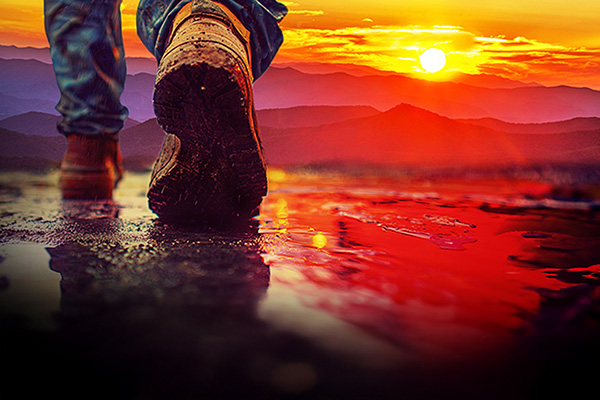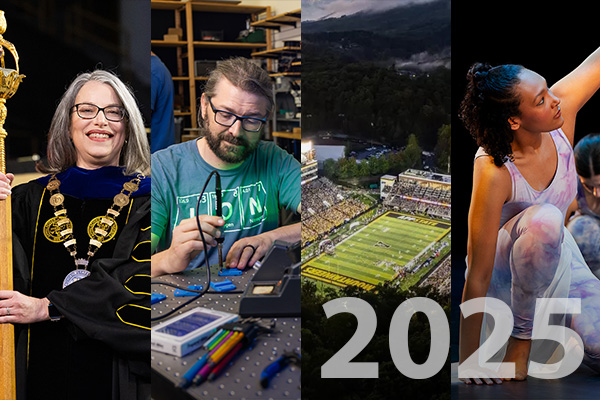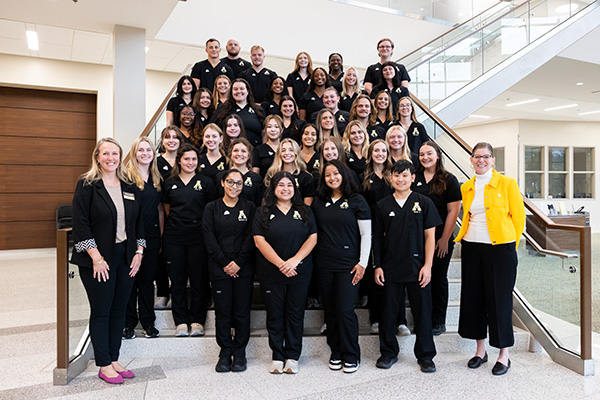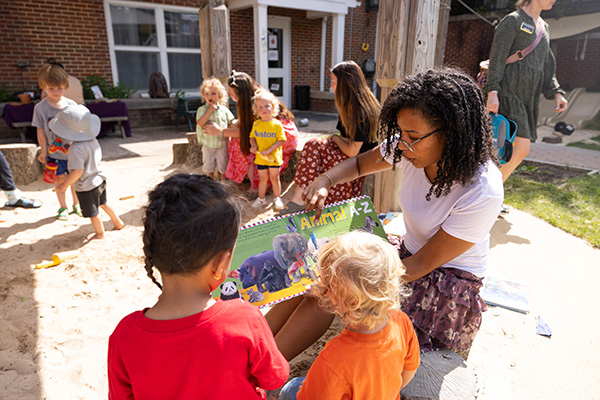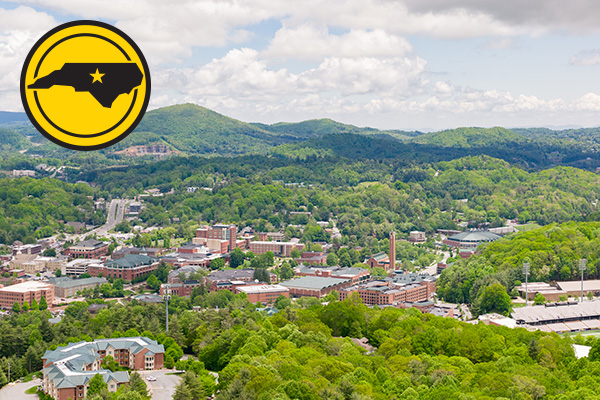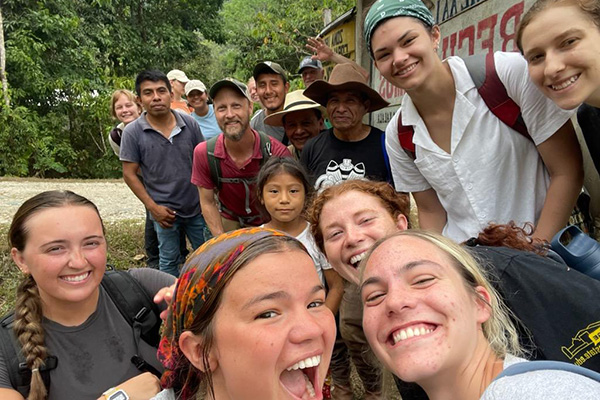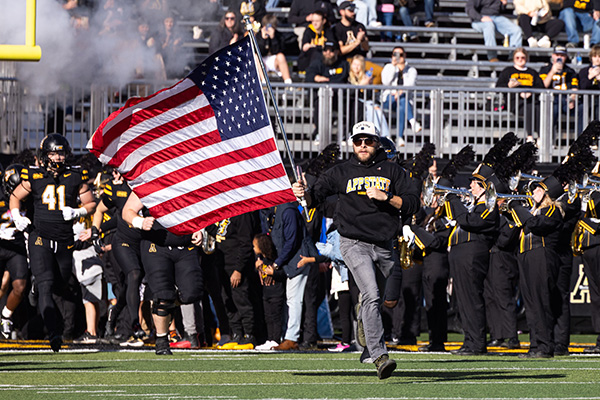BOONE, N.C. — Hurricane Helene is often remembered for scenes of destruction — but at Appalachian State University and in the surrounding community, artists have found beauty, hope and healing in the brokenness, channeling the storm’s impact into creative works.
“When humans are in crisis, they often naturally turn to the arts,” said Dr. Katie Biddle, assistant professor in App State’s Department of Counseling, Family Therapy and Higher Education. “For thousands of years, humans across cultures have engaged the arts as a form of healing. It brings a sense of connection to home, so after a natural disaster in which the idea of home was disrupted for so many people, it’s a very powerful thing.”
Biddle, a registered expressive arts therapist with 15 years of experience in arts-based interventions, has established the Art Relief Map — an evolving online record of therapeutic, art-based offerings that have emerged in response to natural disasters.
The interactive map — developed by Josh Platt, Geographic Information System lab supervisor and adjunct instructor in App State’s Department of Geography and Planning — began to take shape after Hurricane Helene. It allows visitors to explore stories of art programs and artifacts tied to the communities where they originated. While the map is still in its early stages, it already features public artwork from across Western North Carolina, including visual arts, music, writing, movement-based activities and more.
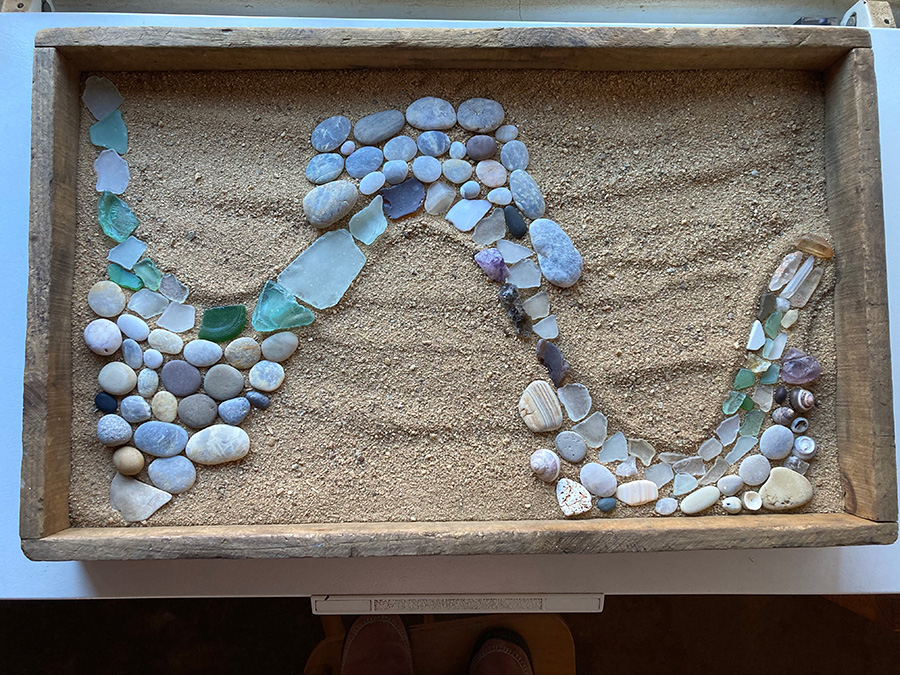
Counselor and expressive arts professional Lucy Lodge created this piece as a reflection on art-based programming facilitated following Hurricane Helene in the Celo Community, located in the South Toe River valley of Yancey County. The programming is documented in App State’s Art Relief Map, an evolving online record of therapeutic, art-based offerings that have emerged in response to natural disasters. Photo courtesy of Lucy Lodge
Biddle described the project as a way to honor a “topography of healing” made possible through creative expression, while also serving as a tool for research and education.
“During Helene, we were experiencing these dramatic changes to the physical landscape, but many of us were also experiencing changes to our inner landscape, which in some ways mirrored those shifts, which felt really profound,” she said. “That’s how this idea began to emerge about creating a map to document art programming inspired by Helene.”
Biddle invites community mental health professionals to share the art-based programming they offered in response to Helene, to help expand the Art Relief Map. Biddle shared that she hopes the map will eventually grow into a global archive of creative responses to natural disasters in general.
“It’s like we found beauty in the midst of chaos, and it feels incredibly hopeful,” said Biddle. “I believe everyone is an artist, and it’s amazing to see what we can create together, even in the most difficult circumstances.”
For questions or to contribute accounts of art programming, contact Biddle at [email protected].
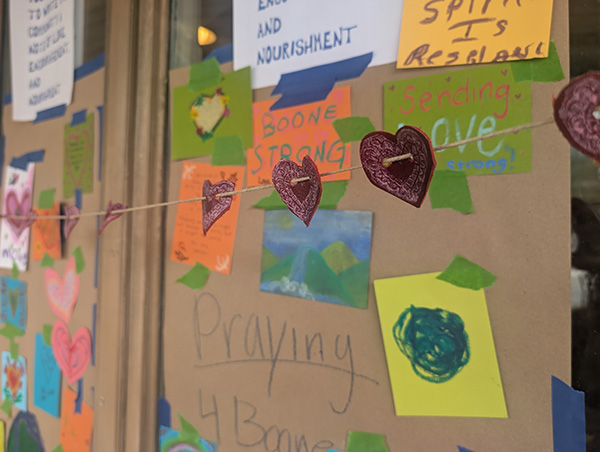
The Boone community created art through the Sidewalk Expressive Arts Ministry project in downtown, in response to Hurricane Helene. The work is documented in App State’s Art Relief Map, an evolving online record of therapeutic, art-based offerings that have emerged in response to natural disasters. Photo courtesy of Andi Gelsthorpe
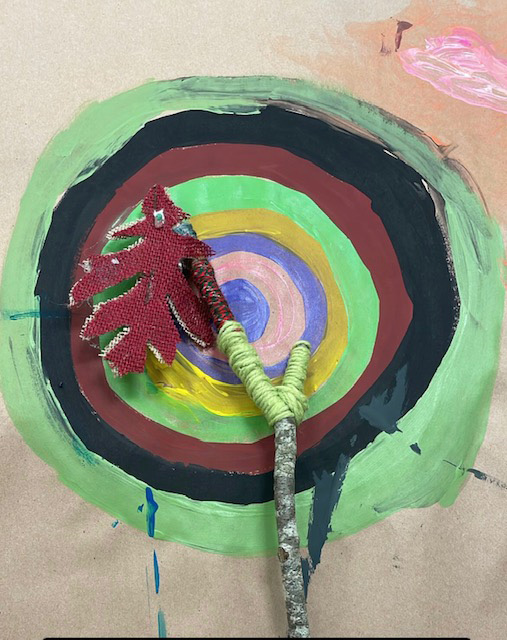
This community-collaborative art piece was created at a Red Cross shelter at Ashe County High School during Hurricane Helene. The work is documented in App State’s Art Relief Map, an evolving online record of therapeutic, art-based offerings that have emerged in response to natural disasters. Photo courtesy of Caitlin Adams
‘Hope, even when the creek rises’
Individual artists across the High Country are also using their work to process Helene’s impact and help their communities heal.
Jewel Davis, interim director of App State’s Instructional Materials Center and education librarian and professor in University Libraries, said making art helped her work through grief.
“Creating with my hands allowed me to reflect, release and reconnect,” she said. “The process was meditative, and it helped me acknowledge my emotions while staying grounded in the strength of our community.”
One of Davis’ art pieces, titled “hope, even when the creek rises,” was inspired by a “Make to Mend” event that she attended after Helene. At the event, nine women from across generations gathered in a creative circle to process the storm’s emotional and physical toll on the community.
“I created a river form by intertwining various textiles and materials,” said Davis. “The materials used at the gathering were intuitively layered — found fabrics, thread and natural textures that echoed both the chaos of the storm and the quiet persistence of the people in the High Country. That river, serving as a symbol of resilience, healing and collective strength, became the inspiration for this mixed-media piece.”
For Davis, making art during difficult times is more than expression — it’s a path to healing, introspection and community.
“Art invites us to slow down, to witness and to feel,” she said. “In times of crisis, artmaking can create a communal space where people can reflect together, share stories and make meaning out of loss. Especially in rural communities like ours, where gathering spaces are vital, creative acts like artmaking help reaffirm our shared resilience. It doesn’t erase the pain, but it gives us a way to hold it together and sometimes even transform it.”
Documenting Helene through a local lens
While personal and community-based art offered a way to process grief and resilience, other creators also played an important role in documenting Helene’s impact. App State alumnus and documentary photographer Jesse Barber ’22 ’24 looked at Hurricane Helene through a local’s lens, capturing moments beyond just devastation.
“A lot of the time I spent was not with the camera in people’s faces, but trying to talk to people and show that I cared,” said Barber, who captured moments in some of Western North Carolina’s most rural areas, including towns in McDowell, Avery, Yancey, Ashe and Watauga counties.
Barber worked with several media outlets to provide photos of the hurricane’s aftermath. His work with The Washington Post was recognized nationally when the outlet was named a Pulitzer Prize finalist for its Helene coverage.
“Most of their photos are the typical big destruction images, so mine stand out, as they’re from a local’s perspective,” he said. “I wanted to show my close relationship to these places, and that had a profound impact on my work.”
Barber said his main focus, beyond capturing devastation, was showing community support and the rebuilding of rural areas. One year later, he is still documenting these moments through his ongoing work with The Assembly, a North Carolina digital magazine.
“I’ve been working with a writer on a story that is a year in the making,” said Barber. “It follows a couple in Lansing who started out boots on the ground, running sort of a rogue relief unit. Then they started a nonprofit to build bridges, and now they’re transitioning back to find what normal life is like again.”
Barber said photography can serve as a personal healing process, and he hopes that extends to the people whose stories he is telling.
“Translating that healing process to Helene allowed me to ask deeper questions, engage with the world with curiosity and document relationships,” he said. “Photography is a tool to show how interconnected our world really is.”
Through his work, Barber said he has met incredible people and forged deeper connections with both the communities he documents and the places he calls home. Now, he continues to explore the untold stories and photographs that didn’t make it to publication.
“Even if the stories weren’t told publicly, they’ll always stay with me,” he said.
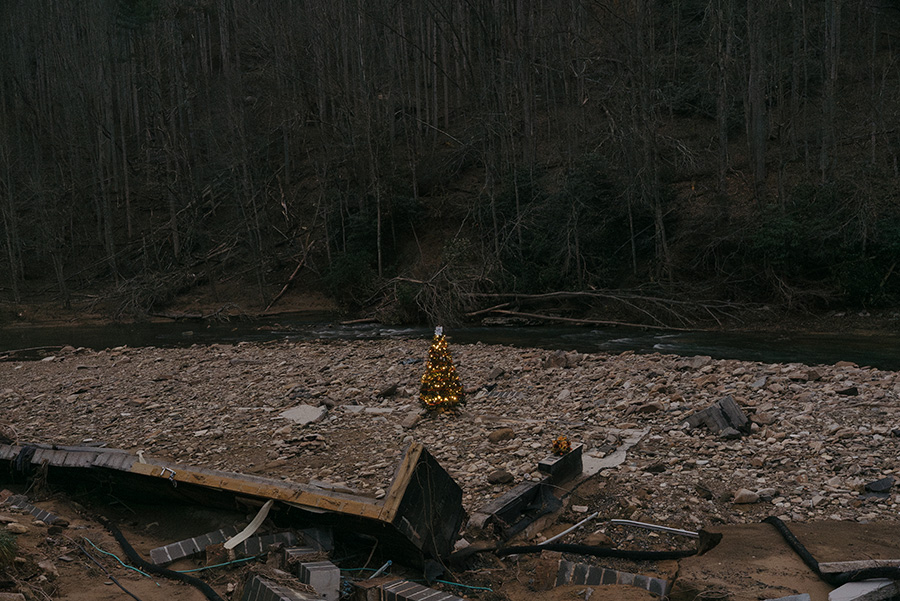
A Christmas tree stands in the rubble where Kim and Rod Ashby’s home once stood along the Elk River near Elk Park. The Ashbys were separated in Hurricane Helene’s floodwaters the day of the storm, with Rod escaping to the bank a few miles downriver. Kim has yet to be found. A celebration of life was held for her in December 2024. Photo by Jesse Barber
Works of film, theater and writing
The App State Community of students, faculty, staff and alumni expressed themselves in a variety of creative ways after Hurricane Helene — producing works ranging from essays and theater productions to documentaries.
- The Appalachian Mountain Writing Project Summer Institute — With the theme “Come Hell or High Water: Writing in the Aftermath of Trauma,” the event brought together teachers and graduate students to cope with Helene’s impact through writing. Organizers are also creating an ongoing podcast and digital storytelling project that includes oral histories of the storm, with plans for a book that will detail these stories.
- “Beautiful, Useful, True” — An original theater production by Elizabeth Parks, assistant professor in App State’s Department of Theatre and Dance, staged in spring 2025. The play told the story of Eunice Newton Foote, an American scientist, inventor and women’s rights activist, and echoed a hurricane through spiral and radial patterns, engaging with the community’s new relationship to water. It touched on healing from Helene, as well as climate change education and community strength and resilience.
- “We Begin Again at 9:30” — A documentary film by Dr. Beth Davison, professor in App State’s Department of Interdisciplinary Studies and co-director of AppDocs, which highlights the Todd community’s response to Hurricane Helene.
- Multiple writings, news articles and photographs — Creative works included contributions from App State senior Ella Adams ’25, who wrote an article for The Assembly, and faculty members Dr. Zackary Vernon, Dr. Jessica Martell, Mark Powell and Chris Moody, who contributed writing and photographs to various outlets, including The Atlantic, Garden & Gun and Salvation South.
What do you think?
Share your feedback on this story.
About Appalachian State University
As a premier public institution, Appalachian State University prepares students to lead purposeful lives. App State is one of 17 campuses in the University of North Carolina System, with a national reputation for innovative teaching and opening access to a high-quality, cost-effective education. The university enrolls more than 21,000 students, has a low student-to-faculty ratio and offers more than 150 undergraduate and 80 graduate majors at its Boone and Hickory campuses and through App State Online. Learn more at https://www.appstate.edu.
